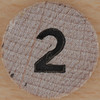Oops. I posted this Best of Future-Talk 3D posting
two weeks ago, expecting not to see any changes in the last weeks of December.
I was wrong. The posting Small
Miracles, shot up spectacularly to the 7th spot. That’s an
important statement in that it validates the importance of 3D viewing in the
arena of vision health, which still does not receive the attention it deserves.
So here is the re-posting, with several other position changes shown as well:
It’s been a thriving
year for the Future-Talk 3D blog, which has grown to
3,400 web impressions per month. As the year comes to an end, it is fitting to
reflect on the most popular topical posts of 2012. The top nine posts are presented below, in order of most web
impressions received this year:
Actually, it’s quite
thought provoking to speculate as to why these particular topics were “top of
mind” in 2012 for the diverse international audience that regularly follows
this blog. Please let us know your hypothesis or thinking by posting a short comment.









